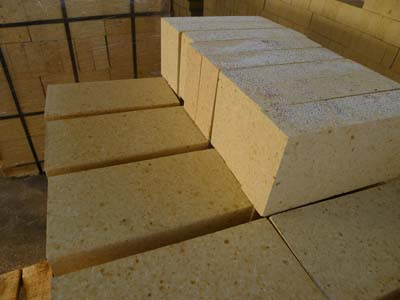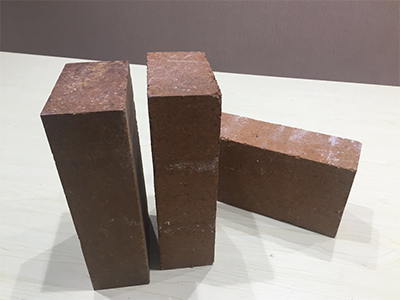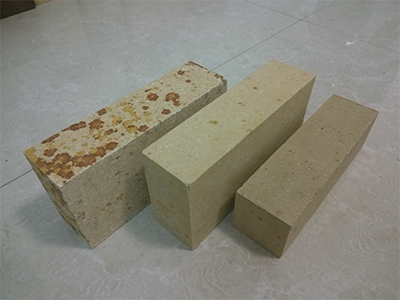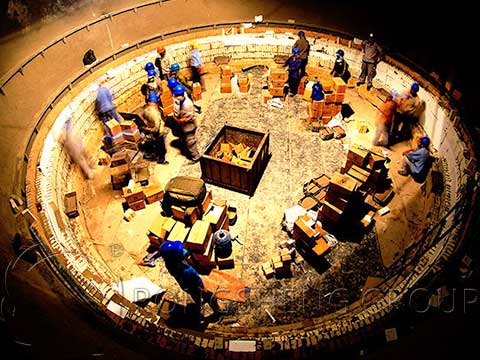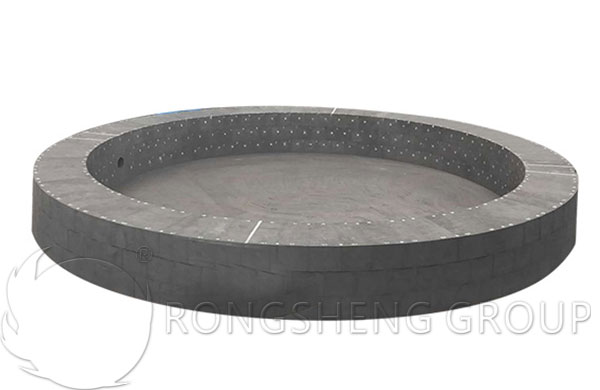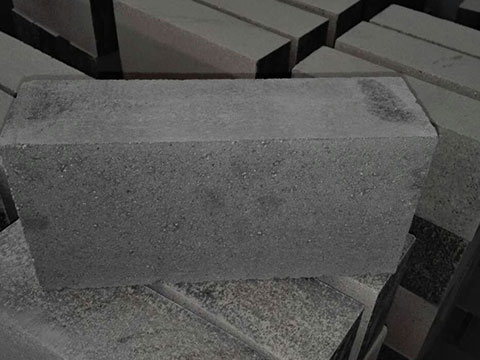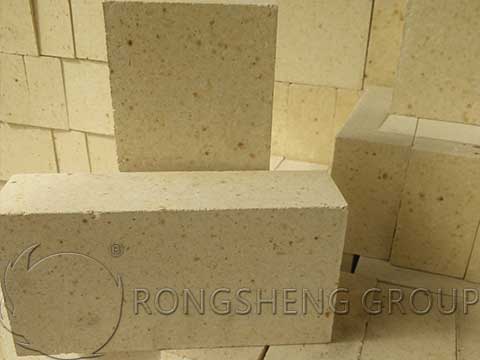The Characteristics of Refractory Materials for Hazardous Waste Rotary Kilns
Refractory bricks are built inside the hazardous waste incineration rotary kiln to protect the rotary kiln from direct hazards due to high temperature and corrosion during hazardous waste incineration. The properties of Refractory Materials for Hazardous Waste Rotary Kilns depend on the composition and distribution of their phases and the chemical characteristics of each phase. In other words, it depends on the chemical mineral composition and chemical composition in the hazardous waste rotary kiln.
Characteristics of Refractory Materials for Hazardous Waste Incineration Rotary Kiln
The main chemical components of refractory bricks used in general hazardous waste incineration rotary kilns include high alumina bricks, magnesia bricks, magnesia alumina bricks, and silica bricks. The content of Al₂O₃ in high alumina bricks is relatively high, generally around 70%. Magnesia bricks are mainly minerals composed of MgO and other metal oxides. Silicon bricks are mainly stable amorphous substances formed by SiO₂ and other metal oxides. Therefore, refractory materials for hazardous waste rotary kilns should have the following characteristics at the same time.
- (1) High refractoriness. That is, high-temperature resistance, it needs to be able to operate in a high-temperature environment above 850°C for a long time without reaching the load softening temperature.
- (2) Good wear resistance and flexural strength. The maximum stress that the refractory can withstand when it is bent on a 3-point bending device is required without breaking.
- (3) Good chemical stability. To prevent the erosion and thinning of substances such as acid and alkali metals in the high-temperature flue gas. Relevant experimental studies have found that compounds of alkali metals (K, Na), halogens (F, Cl), and sulfur (S) are the main factors in the erosion and thinning of refractory materials.
- (4) Good thermal stability. It can withstand the alternating thermal stress of the incineration state, and generally requires no less than 20 times of thermal shock resistance. That is, after heating and holding in a heating furnace at 1100°C for 15 minutes, the heated end is quickly embedded in flowing water at 5-35°C. After covering and cooling for about 3 minutes, take it out, observe the damage rate of the refractory brick, and calculate the number of times.
- (5) The thermal expansion stability is better. Thermal expansion determines the expansion space reserved for refractory brick masonry. When the reserved space is insufficient, the refractory brick will explode and squeeze during high-temperature operation, resulting in an explosion. If the reserved expansion space is too large, the integrity of the rotary kiln may be poor. The middle gap is too large, resulting in non-integrity, and partial looseness, and may even fall off.
- (6) The apparent porosity should be as low as possible. The apparent porosity refers to the ratio of the volume of all open pores in a material with pores to the total volume. Therefore, the higher the apparent porosity, the larger the volume of open pores contained in the refractory. The greater the probability of penetrating substances intruding into the refractory, the greater the erosion of the refractory, so the porosity needs to be controlled as low as possible. At present, domestically produced refractory bricks generally have a porosity of 20% and above.
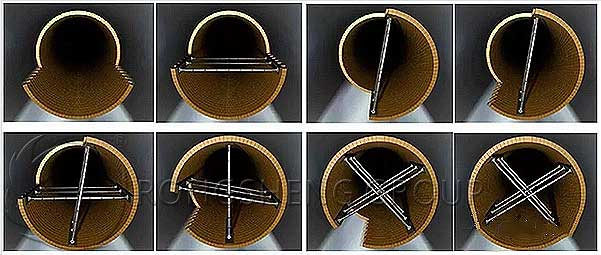
Corrosion of Refractory Materials in Hazardous Waste Rotary Kiln
The materials entering the hazardous waste rotary kiln are mainly organic wastes such as industrial residues and chemical wastes. In the incineration process, the organic sulfur in hazardous waste undergoes high-temperature oxidation, mainly in the form of SO₃ and SO₂. The temperature of hazardous waste in the rotary kiln can reach 800~1300℃. In a high-temperature environment, SO₃ and SO₂ in the flue gas can easily react with minerals on the surface of refractory bricks to produce low-melting copolymers. The reaction equation of sulfur is as follows:
The corrosion of these low melting point polymers leads to serious loss of the bonding strength of the refractory bricks, forming a new low eutectic substance without bonding strength. This leads to the formation of low-melting polymers and low-melting substances on the surface of the refractory bricks. Driven by the movement and friction of the material, the surface will eventually fall off, resulting in the thinning of the refractory bricks.
Since the main components of silicon-alumina refractories are mullite and corundum, the main components are SiO₂ and Al₂O₃. The alkali metals contained in the hazardous waste can react with refractory bricks to generate nepheline-like substances and cause the volume expansion of refractory bricks. It may also cause the melting point to decrease, which in turn increases the corrosion effect on the refractory bricks, and accelerates the thinning rate of the refractory bricks, and shortens the service life.
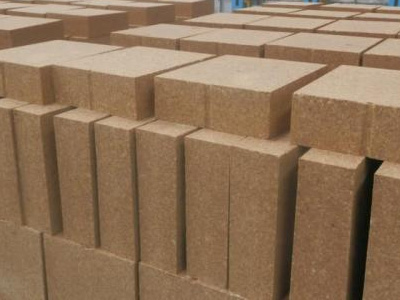
How to Improve the Performance of Refractory Bricks for Hazardous Waste Rotary Kiln
Pure magnesia refractories have very poor resistance to alkaline residues. However, when magnesia-alumina spinel is added to magnesia materials, it can well prevent the permeability of alkaline residues to refractory materials. And as the amount of magnesia-alumina spinel added increases, the penetration resistance will gradually become stronger, but the additional amount should not exceed 20%.
Sodium salts have a strong ability to corrode carbon-magnesia refractories, and it is possible to increase the effect of alkalis to a higher degree at lower temperatures.
After studying the reaction characteristics of alkali metals and refractory materials, the results show that changes in temperature, excess air coefficient, Cl content, and S content will all affect the migration of alkali metals. Therefore, it is recommended to choose composite components according to the actual situation when selecting molded refractories. The properties of refractory materials can resist the combined action of multiple corrosive factors.
Taking sodium carbonate as the research object, the corrosion mechanism of refractory materials is studied from the aspects of corrosion thermodynamics and kinetics. The results show that magnesia-containing refractories have better thermal stability than chrome-containing refractories.
Randomly take incinerator slag as a sample, and draw the following conclusions through some research and demonstration.
- (1) Clay bricks, high alumina bricks, and chrome-containing high alumina bricks were used for erosion tests. The results show that the corrosion resistance of chrome-containing high alumina bricks is better than that of high alumina bricks and better than clay bricks. Considering that chrome is a toxic substance, high alumina bricks are selected as production bricks.
- (2) Optimize the masonry method. Strictly control the key points of masonry to reduce corrosive infiltration to extend the service life of refractory bricks.
- (3) Improve the quality of kiln-hanging leather by exploring the formula and method of kiln-hanging leather. Extend the kiln skin period, thereby increasing the protection of refractory bricks and reducing wear and erosion.
- (4) Explore the best spray gun design by optimizing the liquid waste spray gun. In order to reduce the direct injection of liquid waste onto the surface of the refractory bricks, the corrosion and thinning of the refractory bricks will be caused.
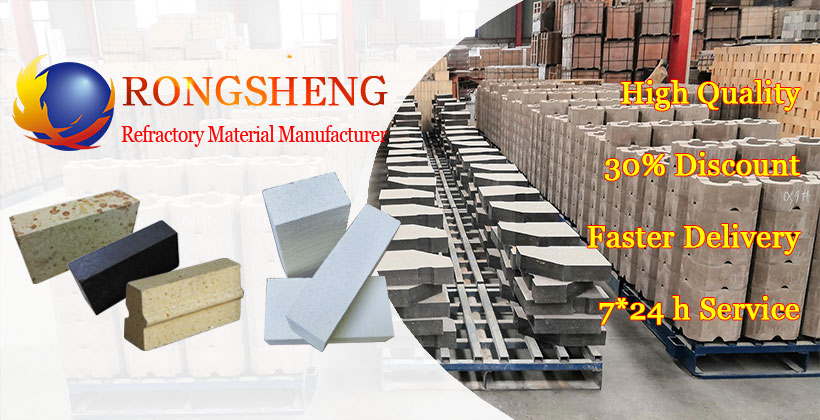
Rongsheng Refractory Manufacturer
Rongsheng is an experienced refractory material manufacturer. We also have rich experience in the production and sales of refractory materials for hazardous waste rotary kilns and cement rotary kilns. And every year, we can receive customer return orders. If you need to replace the refractory lining of your rotary kiln, or you need to build a new rotary kiln, please contact us. Our company’s refractory lining materials not only have the price advantage of the factory but also we provide high-quality customer service. Look forward to working with you.
